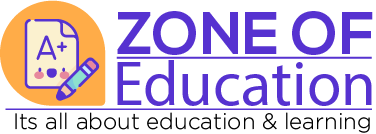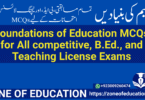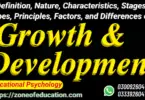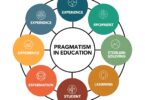What is the difference between Teaching Approaches, Methods, Procedures, Techniques, and Strategies?
Teaching is a complex and multifaceted process that requires a deep understanding of various concepts and principles. In the field of English language teaching, educators often use the terminologies interchangeably such as approaches, methods, procedures, techniques, and strategies.
While these terms may seem similar, they have distinct meanings and play essential roles in effective teaching and learning. In this blog, we will explore the definitions of these terms and establish the main differences among them.
Teaching Approaches: Shaping the Nature of Learning
Teaching approaches serve as an overview that applies to all kinds of learners. They are a set of principles, beliefs, or ideas about the nature of learning that are translated into the classroom. These approaches are based on general assumptions about what language is and how learning a language occurs.
For example, the approach of starting from simple to complex is often applied in teaching mathematics, where students learn basic operations before moving on to more advanced concepts like fractions and algebra. An approach to language teaching describes how knowledge of language is acquired and the conditions that promote language acquisition.
It encompasses the philosophies of teachers about language teaching and can be applied in classrooms through different techniques and teachers can choose the most suitable one for their students and create an effective learning environment.
Teaching Methods: Practical Implementation of Approaches
Teaching methods are the practical implementations of teaching approaches. They are the combination of techniques used by teachers in classrooms to teach their students.
Methods involve decisions about the particular skills to be taught, the roles of the teacher and the learner, the content to be taught, the order of presenting the content, and the assessment and evaluation of learners.
Methods provide a systematic way of teaching by following a specific plan or procedure. They help teachers become aware of their fundamental assumptions, values, and beliefs. Teachers can make informed choices and resist the imposition of a particular method. Teaching Methods also allows teachers to integrate theory and practice, encouraging continuing education and professional growth.
Teaching Procedures: The Orderly Arrangement of Steps
Procedures are an essential part of any organized society, and teaching is no exception. In the context of teaching, procedures refer to an orderly and logical arrangement of steps that teachers follow when implementing a certain approach. They establish a classroom culture and community by explaining how things should be done. Classroom management procedures are crucial for creating a structured learning environment. They help students know what to do in various situations, such as when their pencil breaks, when they finish their work early, or when they need to use the restroom. Procedures are smaller than methods but larger than techniques. They necessitate specific practices and behaviors that operate within the framework of a method.
Teaching Techniques: Personal Strategies for Effective Instruction
Teaching techniques are the personal strategies used by teachers to provide students with effective instruction. These techniques are implementational, meaning they are applied in the actual classroom setting. Teachers adapt their teaching techniques based on the individual needs, learning styles, and interests of their students. Teaching techniques are highly individualized and tailored to create a customized learning experience. They can take the form of exercises, activities, or any creative approach that helps students achieve the desired learning outcomes. Techniques are the actual moment-to-moment classroom steps that lead to a specified outcome.
Teaching Strategies: Approaching Problems and Tasks
Teaching strategies refer to the methods of approaching problems or tasks to achieve a specific end. They involve modes of operation and planned designs for controlling and manipulating information. Teaching strategies cascade from the identified teaching approach to the teaching method and the teaching technique. Different teaching strategies are used in harmony with the selected teaching method. For example, if the teaching method involves class activities rather than lectures, a suitable teaching technique could be role-playing. Teaching strategies help teachers approach the teaching and learning process more creatively and engagingly.
Understanding the distinctions between teaching approaches, methods, procedures, techniques, and strategies is crucial for effective teaching and learning. The methodology provides teachers with different ways to organize teaching practices while teaching approaches shape the nature of learning. Methods are the practical implementations of approaches, and procedures provide an orderly arrangement of steps. Techniques are personal strategies that ensure effective instruction, and strategies are modes of operation for achieving specific outcomes. By gaining a clear understanding of these terms, teachers can make informed decisions, reflect on their own teaching practices, and enhance their professional growth. The knowledge of these concepts empowers teachers to create engaging and effective learning environments that cater to the diverse needs of their students.






